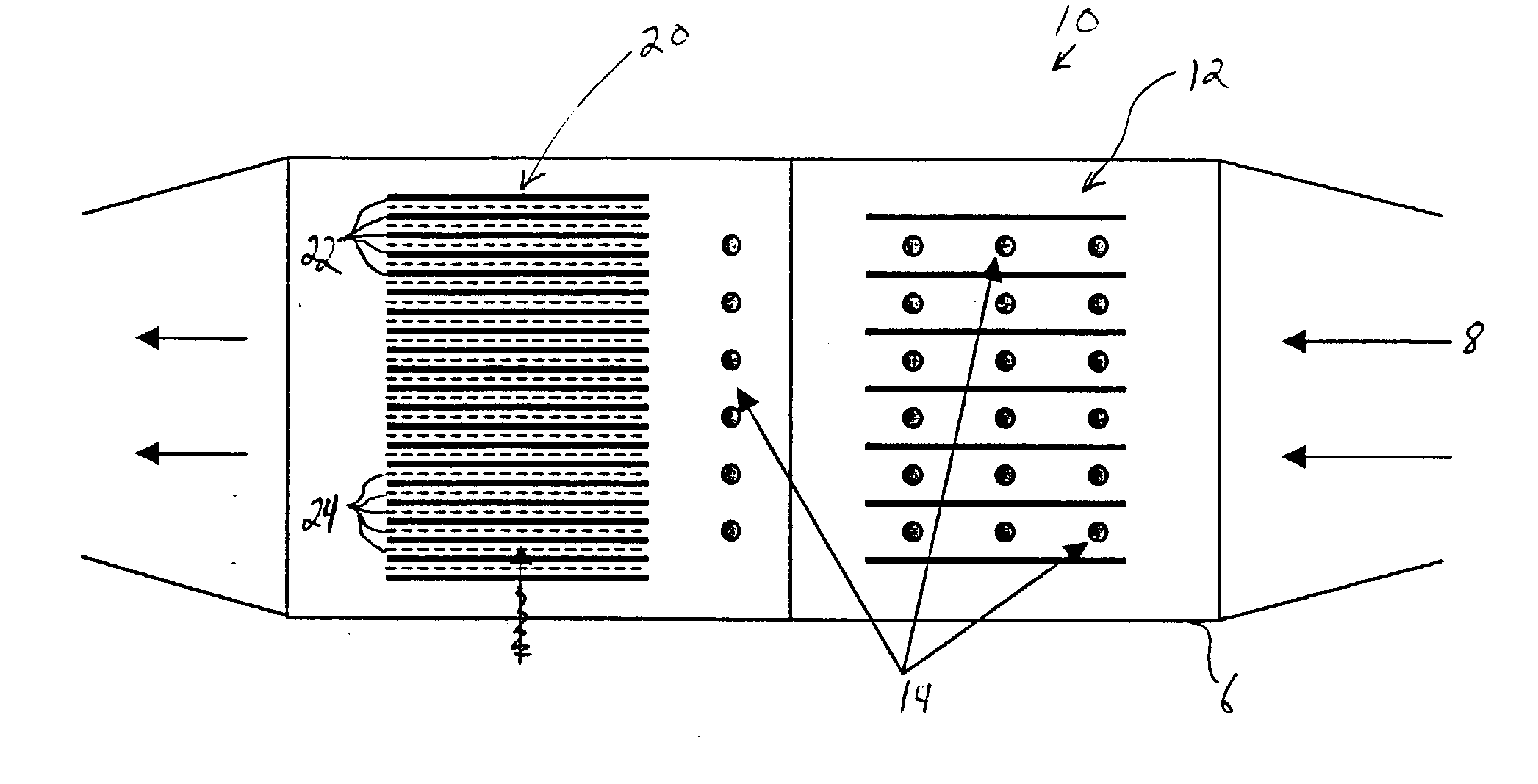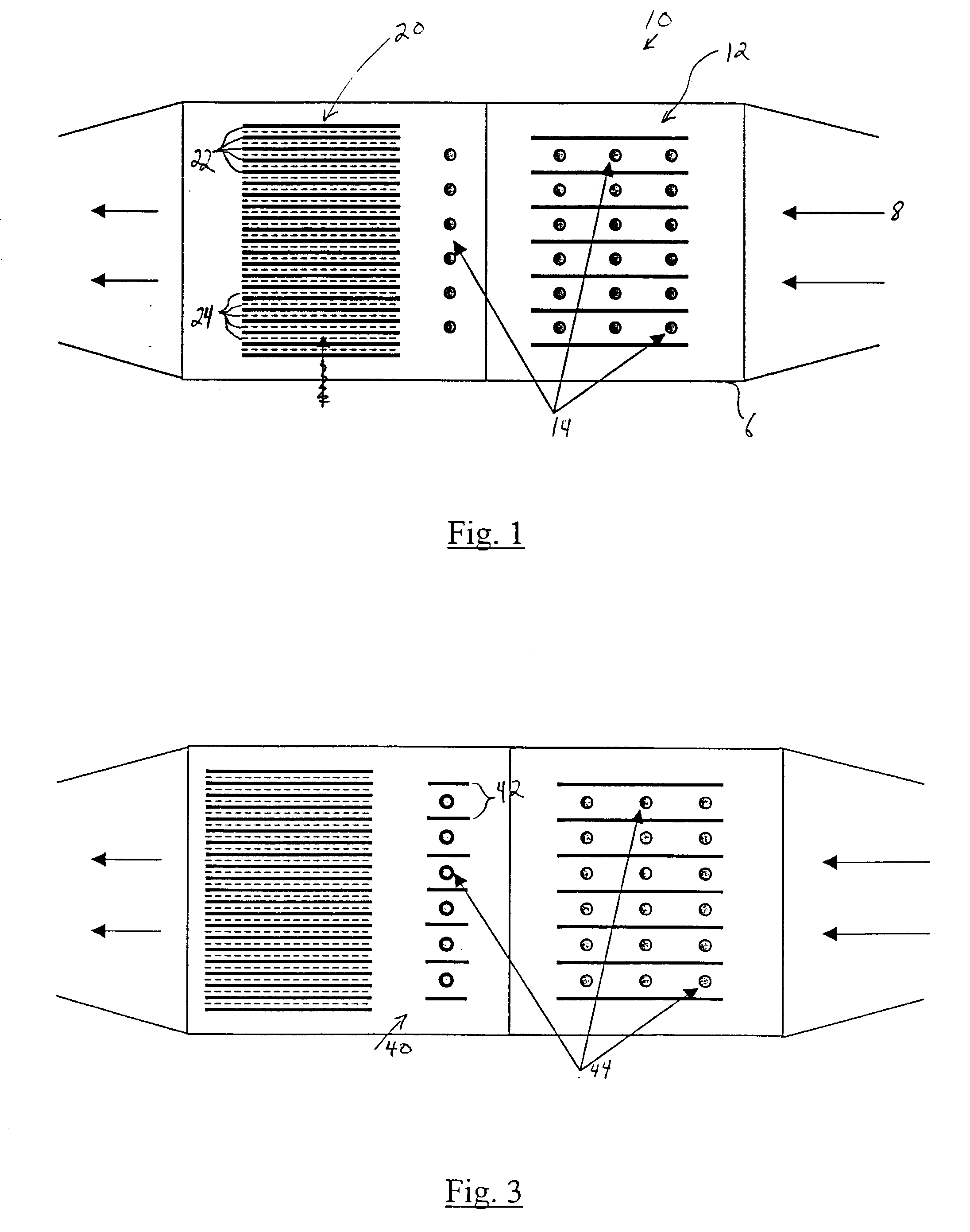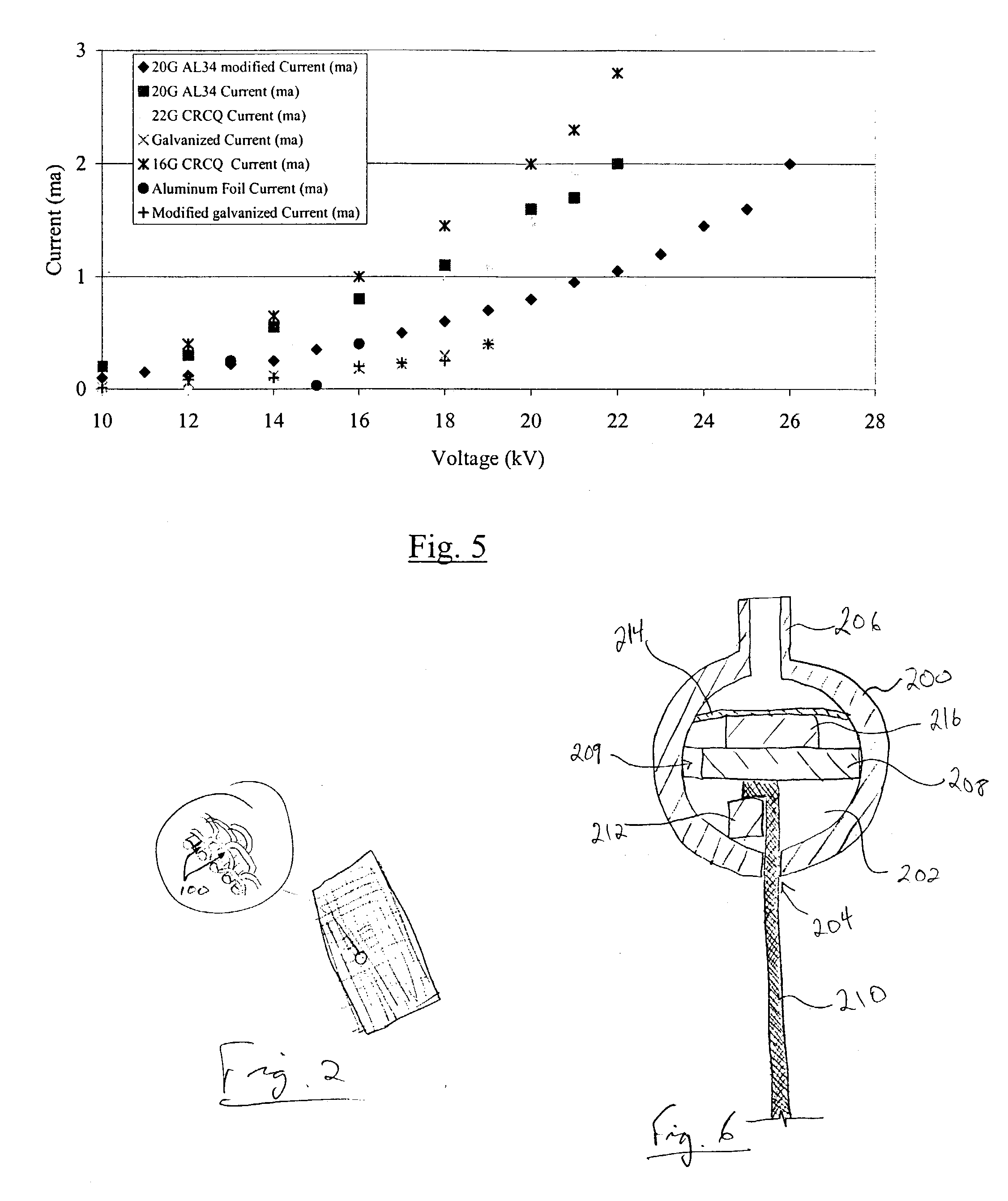Membrane laminar wet electrostatic precipitator
a wet electrostatic and membrane technology, applied in the field of wet membrane electrostatic precipitators, can solve the problems of large collection of acid aerosols and fine particulates, inability of conventional esps to address the problem of gaseous emissions or gas-to-particle conversion, and large collection of fine particulates. , to achieve the effect of reducing the formation of back corona, excellent conductor and greater energizing power
- Summary
- Abstract
- Description
- Claims
- Application Information
AI Technical Summary
Benefits of technology
Problems solved by technology
Method used
Image
Examples
Embodiment Construction
[0037] An embodiment of the present invention is shown in FIG. 1, in which a hybrid precipitator 10 is shown having a dry ESP field 12 in the path 8 of the gas containing particulate and other matter. The dry ESP 12 is a conventional electrostatic precipitator that collects a large percentage of the particulate in the gas stream 8. Downstream from the dry ESP field, charging electrodes 14 extend across the path of the gas to pre-charge the matter in the gas. Downstream from the charging electrodes, a wet ESP 20 is disposed in the gas stream.
[0038] The wet ESP 20, which can be used in a horizontal or a vertical flow flue, includes grounded collecting electrodes 22 and high-voltage discharge electrodes 24. The collecting electrodes 22 are planar and substantially parallel to the direction of flow of the gas stream 8 flowing through the wet ESP 20. Between each pair of collecting electrodes 22 is a substantially parallel discharge electrode 24, and a space of about 3 to 5 cm is formed ...
PUM
 Login to View More
Login to View More Abstract
Description
Claims
Application Information
 Login to View More
Login to View More - R&D
- Intellectual Property
- Life Sciences
- Materials
- Tech Scout
- Unparalleled Data Quality
- Higher Quality Content
- 60% Fewer Hallucinations
Browse by: Latest US Patents, China's latest patents, Technical Efficacy Thesaurus, Application Domain, Technology Topic, Popular Technical Reports.
© 2025 PatSnap. All rights reserved.Legal|Privacy policy|Modern Slavery Act Transparency Statement|Sitemap|About US| Contact US: help@patsnap.com



